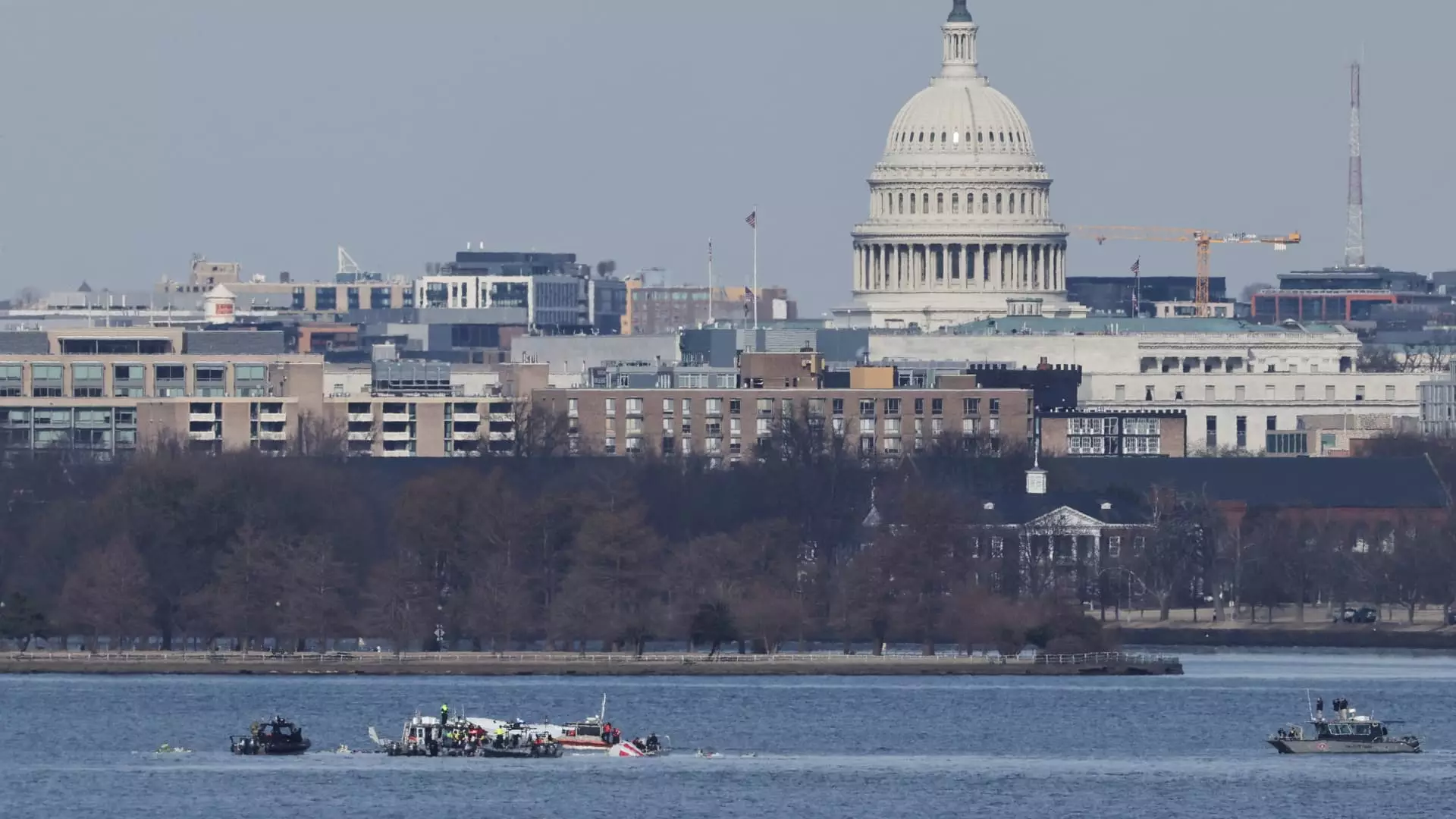The recent collision between a Black Hawk helicopter and an American Airlines jetliner over the Potomac River stands as a stark reminder of the complexities and dangers of modern air traffic, especially in densely populated urban environments. The incident, which resulted in the loss of all 67 lives aboard, has sparked urgent investigations and raised significant questions about aviation safety protocols and regulations. This article seeks to analyze the details surrounding the crash and the larger implications for air traffic management in the United States.
On a fateful Wednesday night, tragedy struck as American Airlines Flight 5342, operated by PSA Airlines, approached Reagan National Airport for landing. The Bombardier CRJ-700, flying at approximately 300 feet, collided violently with a Black Hawk helicopter that was reportedly conducting an annual training flight. Witnesses described the horrific scene as an explosion lit up the night sky, marking it as the deadliest U.S. aviation disaster since 2001.
The implications of such a catastrophic event are vast. According to Fire and EMS Chief John Donnelly, as of the latest updates, 41 of the bodies have been recovered, with 28 identifications confirmed. Both engines of the American Airlines flight have been severely damaged, and the charred wreck may take weeks, if not months, for investigators to fully reconstruct. As this investigation unfolds, flight data and cockpit voice recorders have become key pieces of evidence.
In the wake of this tragedy, questions arise regarding the regulatory frameworks governing airspace around critical landmarks like Washington, D.C.’s Reagan National Airport. The Federal Aviation Administration (FAA) mandates specific altitude limits for helicopter operations, especially in congested areas. It posits that helicopters should remain at or below 200 feet when transiting near the airport perimeter. It raises eyebrows as reports suggest the helicopter may have been flying significantly higher than the prescribed limit.
National Transportation Safety Board (NTSB) member Todd Inman described D.C. as a unique operational environment with well-defined helicopter zones and tracks. This systematic approach aims to facilitate safe navigation amid the bustling aviation traffic, yet the collision suggests lapses in this well-established protocol. The NTSB is currently leading the investigation into the circumstances that led to this unfortunate event, highlighting the importance of thorough safety evaluations and regulatory adjustments.
The investigation has also shed light on operational challenges within the Reagan National Airport tower. Preliminary reports indicate that staffing may not have aligned with the high volume of air traffic usually present at that time. This concern is compounded by a pattern of close calls at U.S. airports and the shortage of air traffic controllers which has drawn scrutiny from policymakers.
Regulatory guidelines do permit controllers to share responsibilities, potentially combining the oversight of helicopter and airplane traffic into one position during times of high demand. However, this approach can lead to increased risks. In this instance, a supervisor allegedly allowed a controller to leave their shift early, a decision that may have compromised the oversight necessary to prevent such a catastrophic encounter.
Reactions to the incident have ranged from shock to outrage, with pundits and public figures alike making fervent remarks. President Trump’s declaration that the helicopter was flying “far above the 200-foot limit” prompted discussions on accountability and the often surprising speed at which conclusions are drawn following aviation disasters. Similarly, Defense Secretary Hegseth’s assertion of an “elevation issue” indicates a recognition that procedural failures may have contributed to this disaster.
While it is essential to refrain from jumping to conclusions amid ongoing investigations, there emerges a pressing need to reevaluate air traffic management practices, especially in congested urban airspaces. Given the unprecedented growth in passenger traffic over the last decade, any potential misalignment in safety protocols could have deadly consequences.
This incident serves as a clarion call for heightened vigilance in the aviation sector. It is imperative that regulatory bodies, aviation authorities, and public safety officials collaborate to reassess and enhance current safety measures. The goal should be to ensure that tragic incidents like this one never occur again. As investigations continue, it is crucial that lessons are learned and acted upon swiftly to improve the security of air travel for all.
The legacy of this tragedy must serve as a foundation for improved policies and increased accountability within the aviation industry. The lost lives stand as a poignant reminder of the complexities of air travel and the profound responsibility that comes with ensuring safe skies for all.


Leave a Reply